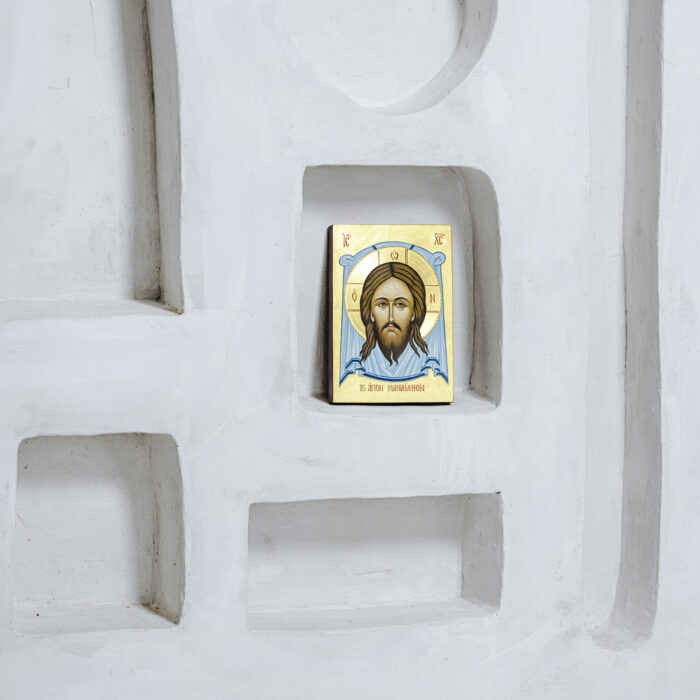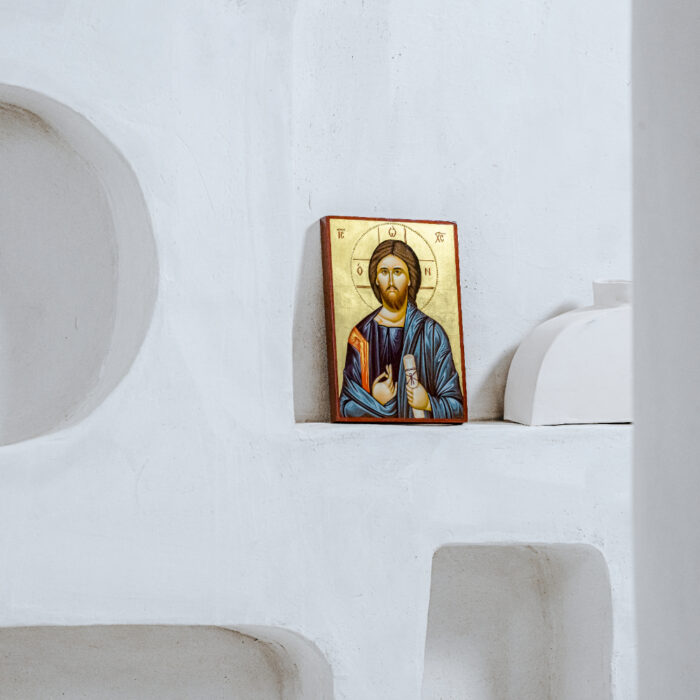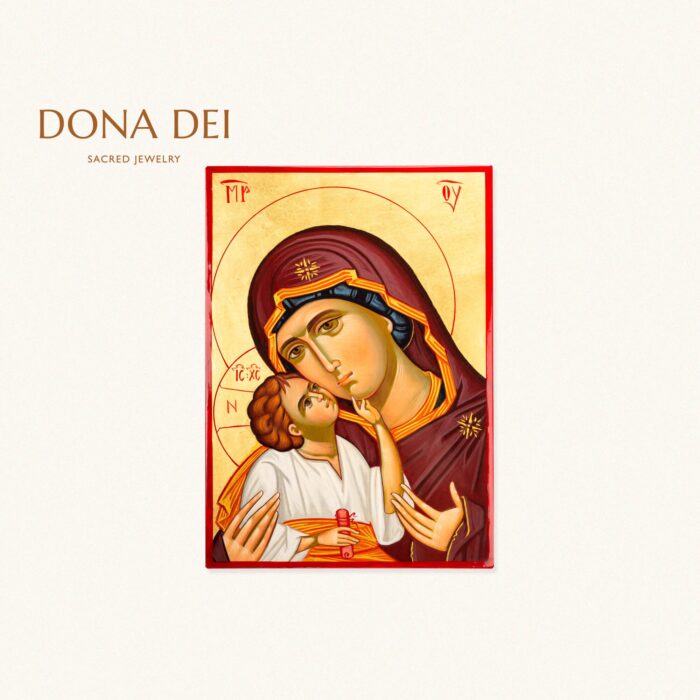Description
Hand Painted Orthodox Cretan Icon of Christ Great High Priest, painted in Romania, by Orthodox iconographer Oana Materials: Natural Pigments, a Lime-tree Wood Board, 24K Gold Leaf, Varnish Size of the Icon: appr. A4 11.7x7.7 inches/ 29,7x19.5 cm, Thickness 1.4 inch/ 3.5 cm. Technique: ...Egg Tempera technique, Hand Painted History of the icon In this incredible icon, the Lord Jesus Christ is depicted in his dual role as High Priest and King, wearing both the vestments of a bishop and the crown of a sovereign monarch. He holds the Gospel in one hand and gives the priestly gesture of blessing with his right hand. The original icon was painted by the famous Cretan iconographer Andreas Ritzos in the 15th century and shows the Lord as the Great High Priest for us in heaven and on earth. Explaining why we need a Great High Priest, St Paul says in his Epistle to the Hebrews: "Since then we have a great High Priest who has entered into heaven, Jesus Christ the Son of God, let us hold fast our confession. For we have not a high priest who cannot be touched with the feeling of our infirmities but was in all points tempted like as we are, yet without sin. Let us, therefore, approach boldly the throne of grace, where we may obtain mercy and find grace to help in time of need. (Hebrews 4:14-16) A very interesting detail. In the icon, the Lord is holding an open book. The inscription is in ancient Greek, as on the original icon, and can be translated as "I am the Good Shepherd, the Good Shepherd lays down his life for his sheep". Technical details:• Icon painted in Romanian Orthodox monastery by Mother Neonila;
The uniqueness of the icon:
• Excellence quality hand-painted icon;
• Natural pigments;
• 24K gilded and varnished;
• Icon painted on a Lime-tree Wood Board.• Cretan school is an important school of icon painting, which flourished in Crete in the Late Middle Ages;
Need further information? If you have any questions, please, do not hesitate to contact me, I'll be glad to answer them.
• Cretan artists had established a distinct icon-painting style, distinguished by “the precise outlines, the modeling of the flesh with dark brown underpaint” and other details;
• The icon was created in the 15th century by the iconographer Andreas Ritzos.















